Cross-country makes for some of the most engaging mountain bike racing, with riders battling it out elbow-to-elbow over steep climbs and technical descents.
XC courses have become more challenging over the past decade. As a result, cross-country bikes have had to evolve so riders can climb efficiently and maintain speed through technical sections.
With the XC World Cup kicking off in Nové Město last weekend and an onslaught of new bike releases, such as the Pinarello Dogma XC, Cervelo ZFS-5, Wilier Urta Max SLR and Specialized Epic World Cup, we thought we’d run through some of the key features defining the bikes competing at the top end of cross-country racing.
Full-suspension dominates
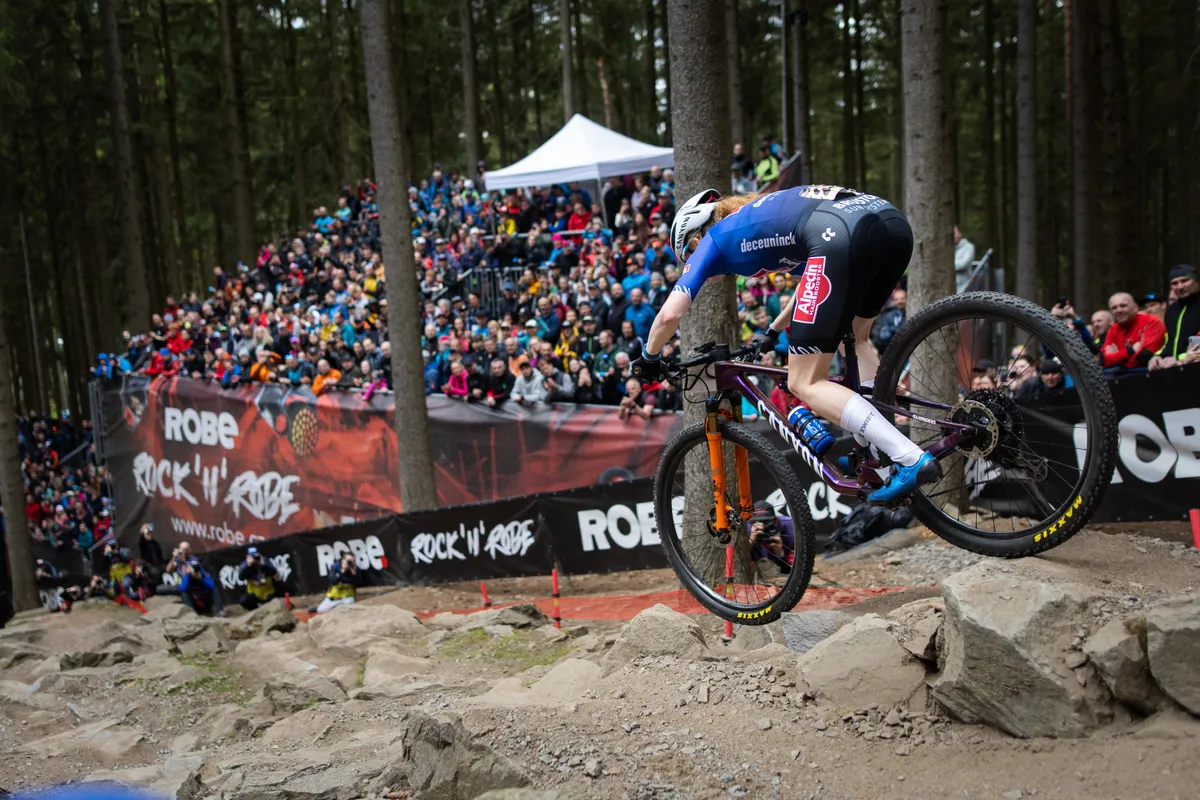
Cross-country mountain bikes have to deliver high levels of efficiency for flat-out racing, while still remaining capable downhill.
This need for capability has seen a shift in bike design, with increased travel and aggressive geometry needed for the ever-more demanding courses.
The Nové Město round of the World Cup is renowned for its technical course, but the trend for challenging terrain is reflected across top-tier racing.
It’s not uncommon to see bikes sporting 120mm of travel, with Orbea’s Oiz and Scott’s Spark RC both packing 120mm of rear-suspension travel. Not so long ago, this would have been as little as 80mm.
We've also seen some manufacturers drop hardtails from their racing line-ups altogether, with bikes such as Specialized’s full-suspension Epic World Cup marketed for use on all course types.
That’s not to say hardtails can’t be found on the grid, with riders such as Kate Courtney still choosing a hardtail for less technical race circuits. However, full-suspension bikes now dominate the XC World Cup scene.
Top-tube mounted shocks have taken over
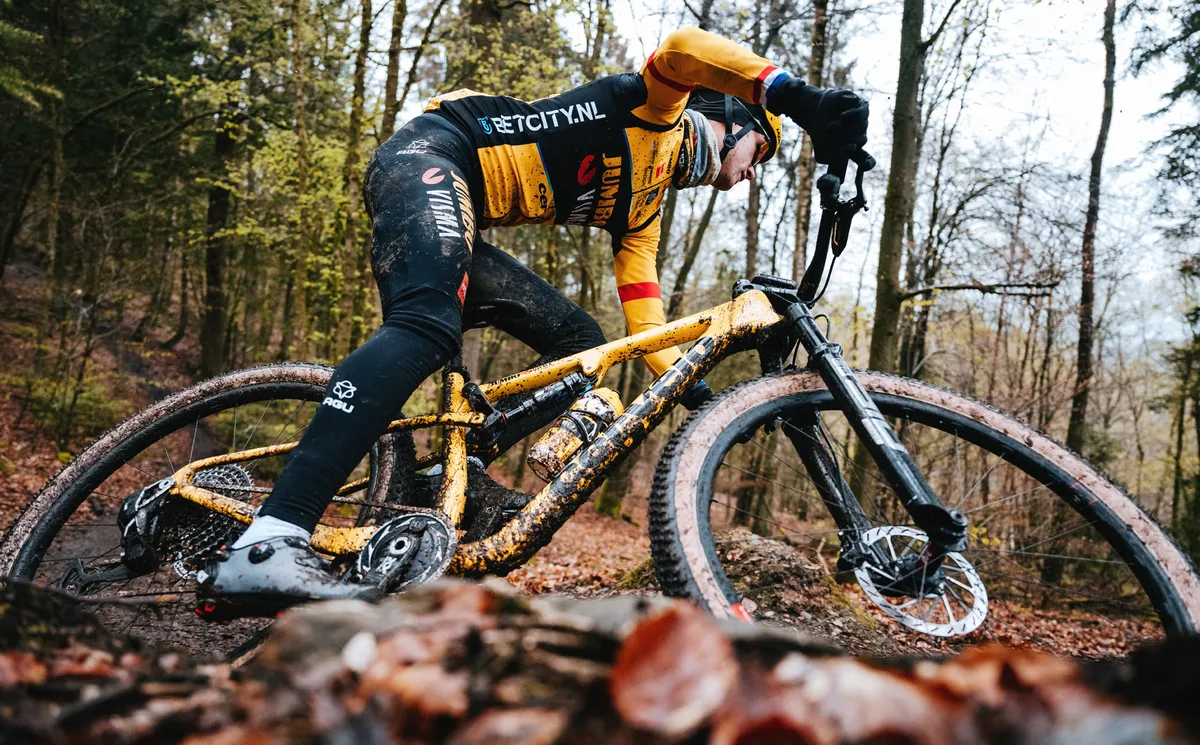
Many of the latest crop of cross-country bikes share a similar silhouette, with the rear shock mounted on the underside of the top tube.
Pinarello’s Dogma XC and the BMC Fourstroke are two bikes that feature this tried-and-tested design.
Why? Well, the reason for this shock placement is to allow room for two water bottles in the front triangle.
This is especially important in the longer cross-country marathon events, where riders can be racing for more than 100km with only a handful of feed and water stops.
Having the shock under the top tube also protects it from mud and spray picked up by the wheels, leading to less wear on the seals during longer races.
Trek and Specialized have taken this design one step further, integrating the rear shock into the top tube of the Supercaliber and the Epic World Cup, giving the bikes hardtail-esque silhouettes.
Increased fork travel
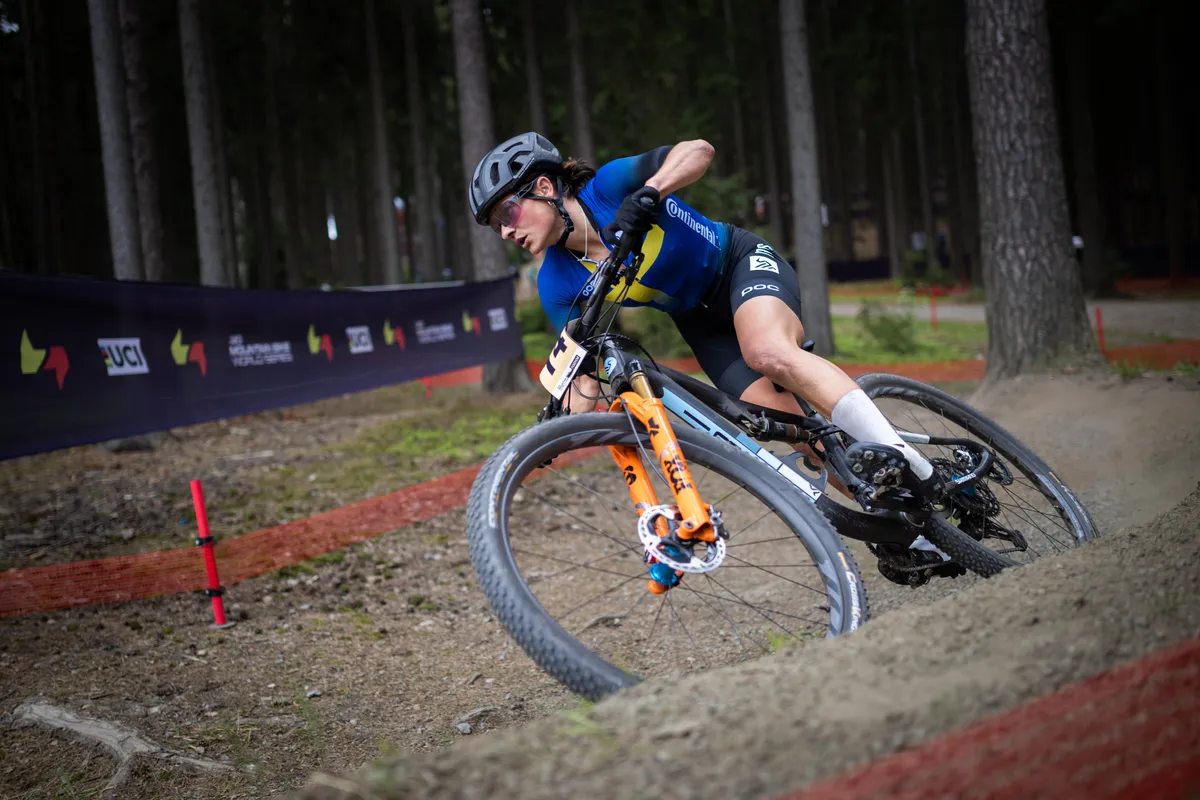
For a long time, 100mm of fork travel was the standard in XC racing but, with the increase in course difficulty, a lot of bikes have seen an increase in travel.
While hardtails such as the Scott Scale remain at the 100mm threshold, it's increasingly common to see 110mm and even 120mm of travel. We’re venturing into downcountry bikes territory here.
Lightweight forks such as Fox’s 32 SC and the RockShox SID have enabled bike manufacturers to increase travel without adding weight. This is crucial for XC racing, given the need for riders to scale climbs as quickly as they descend the other side.
However, any trade-off in weight is likely to be worthwhile, with many riders forfeiting a few grams for the ability to attack descents.
Dropper posts are all-but-standard
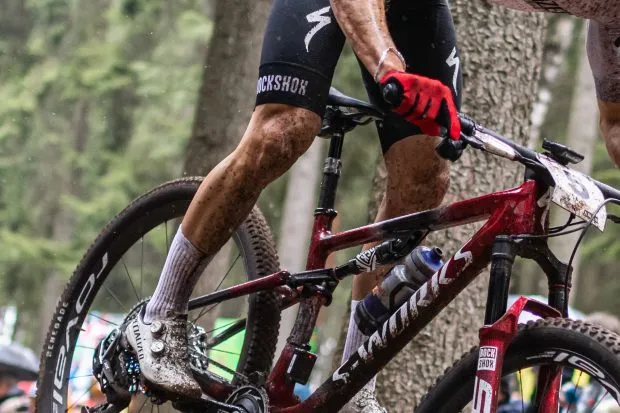
While dropper posts have become synonymous with mountain biking, they've struggled to make waves on the XC race scene – until now.
The reluctance of top-tier riders to use dropper posts has been due mostly to their increased weight over fixed seatposts, alongside the fact they could more than handle a typical XC course without a dropper.
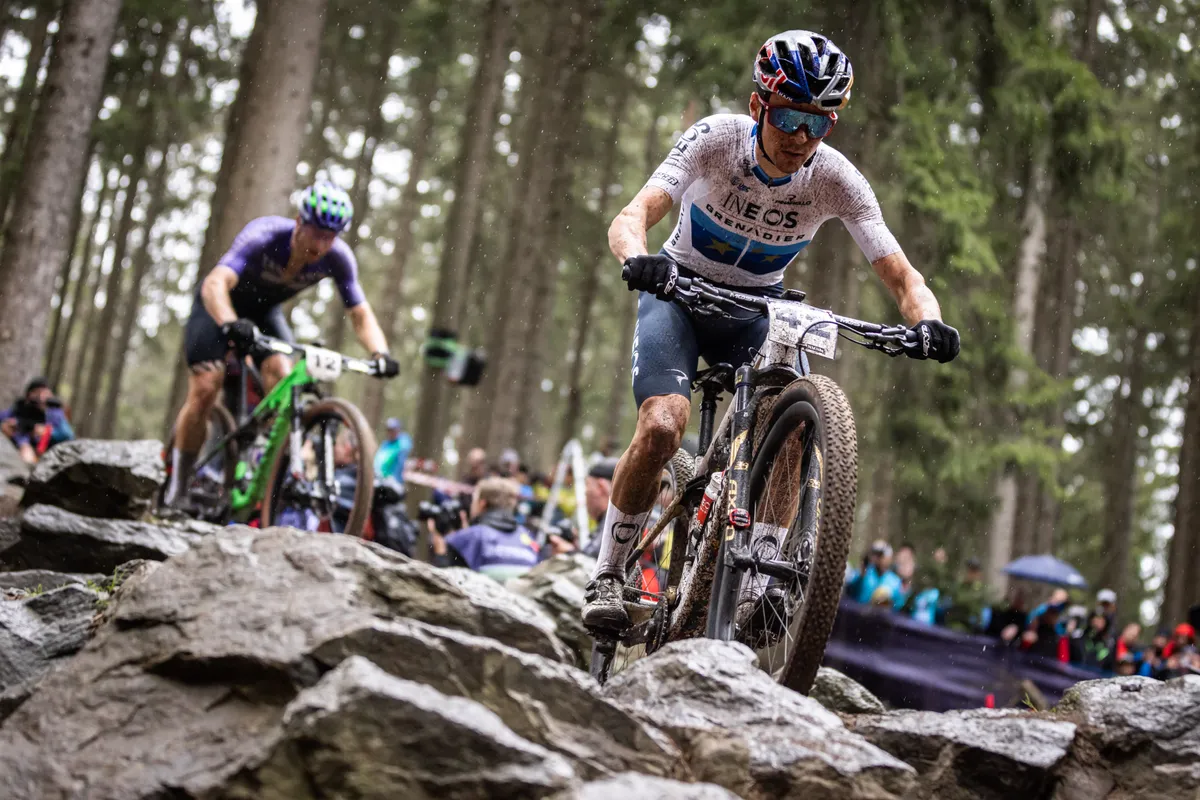
However, we are starting to see more and more riders take the weight penalty in order to have more room to manoeuvre the bike on technical descents. That included men’s and women’s winners Tom Pidcock and Puck Pieterse in Nové Město, with the latter riding the Canyon Lux (another full-suspension bike with a top-tube mounted shock).
Notable exceptions were Trek Factory Racing’s Anton Cooper, who used a ridgid post in the XCO event.
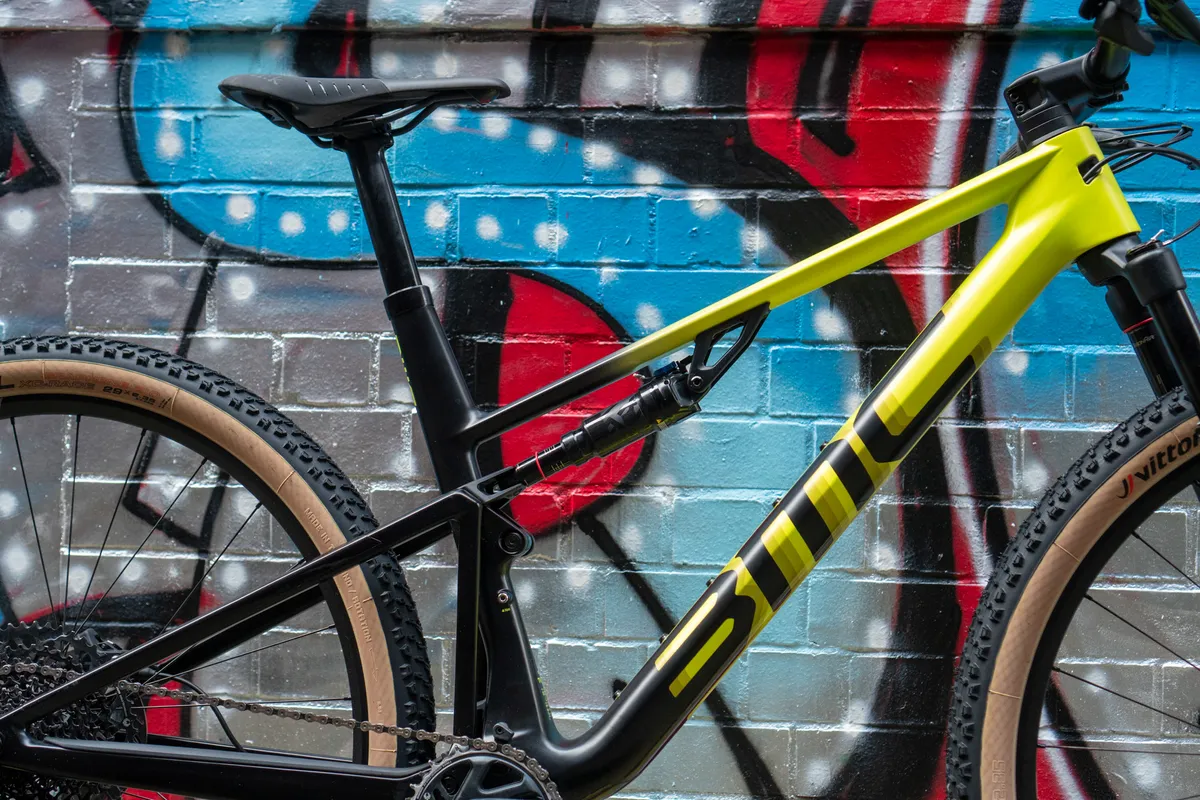
BMC has gone as far as incorporating a dropper post into its top-end Fourstroke frame.
BMC’s RAD integrated dropper also features a clever air tank system that automatically raises or lowers the saddle so the rider doesn’t need to sit down to drop their seat.
More capable geometry
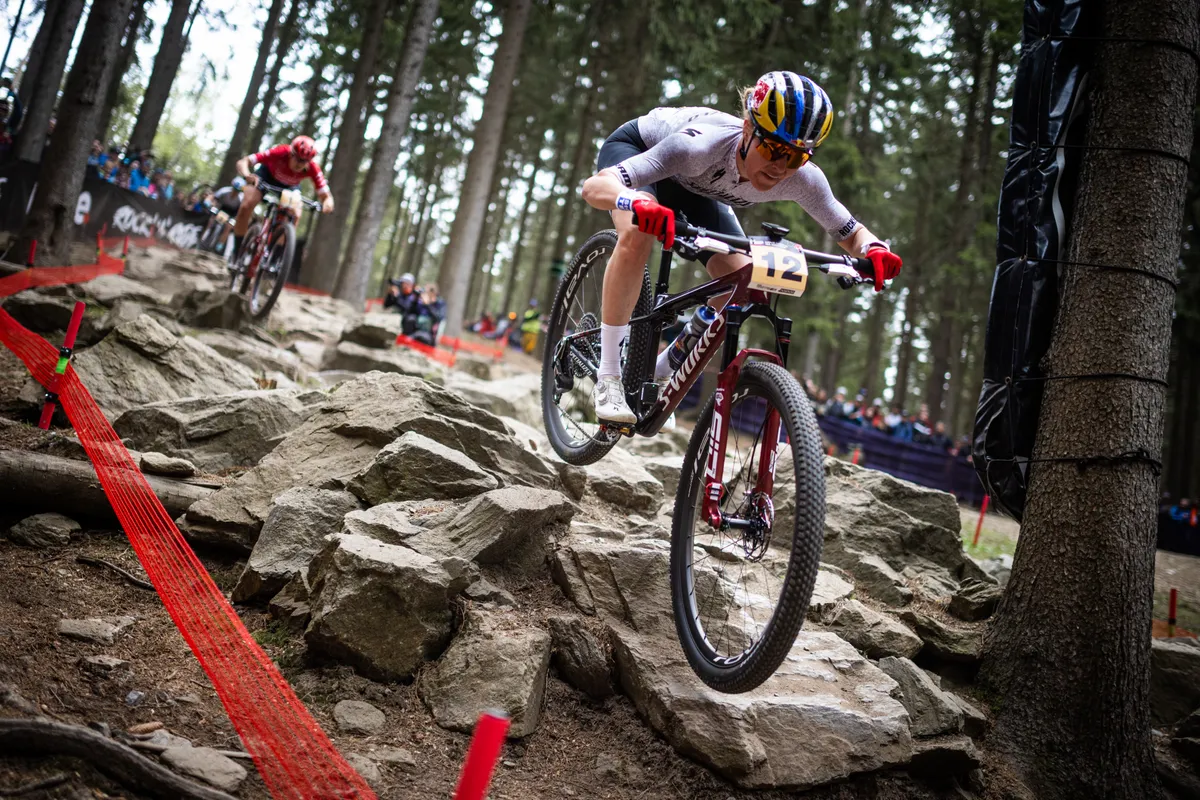
As race courses have become more technical, cross-country bikes have followed the trend of longer, lower and slacker geometry seen in trail and enduro bikes. The idea, once again, is to make XC bikes more capable on descents.
It's not unusual to see XC hardtails or full-suspension bikes with 66.5-degree head angles. Specialized’s Epic World Cup and the Cannondale Scalpel HT share this measurement.
While there are still bikes featuring 68-degree head angles, most bikes are much slacker than the 70 degrees or above head angles of old.
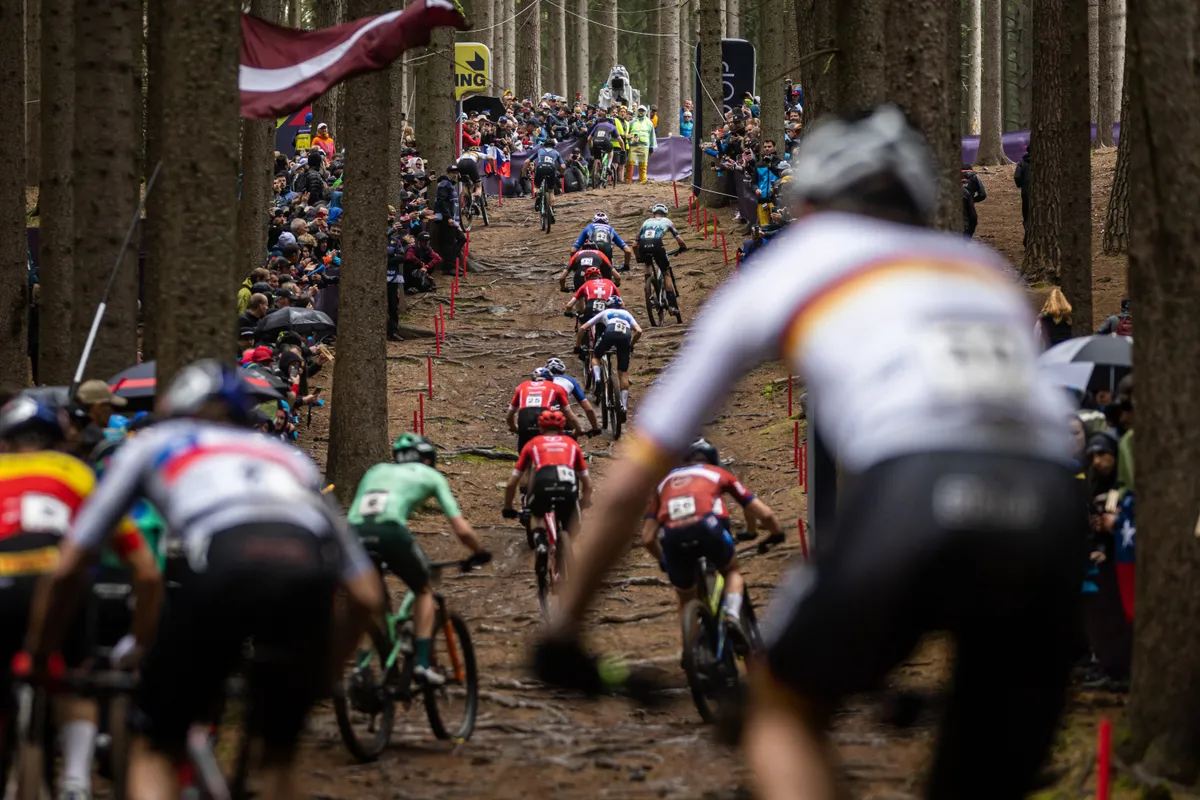
Seat tube angles have remained steep, because this positions the rider over the crankset, centring their weight and keeping the front wheel grounded when climbing in the saddle.
Front centres – the distance from the centre of the bottom bracket to the front axle – have increased in length, giving riders more stability on steep downhills by enabling the bike to sit further into the rear travel and reducing the chance of going over the bars.
A sea of carbon fibre
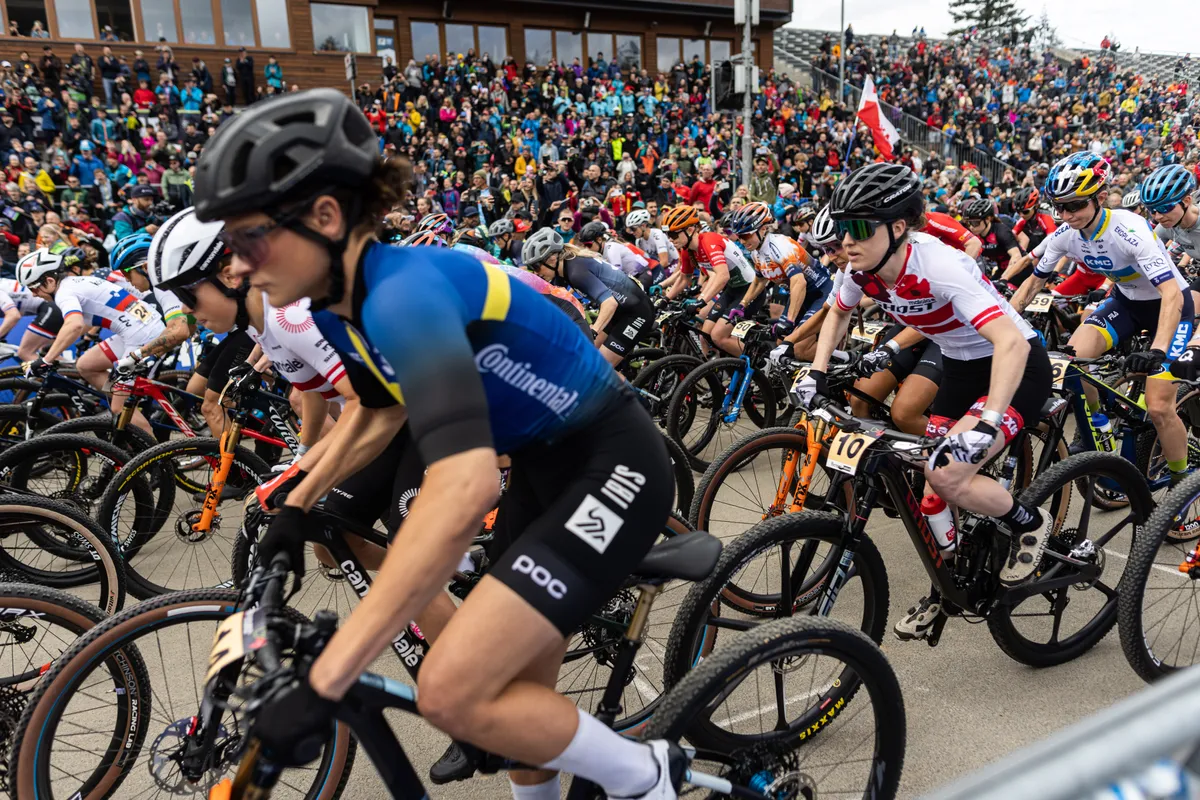
Thanks to the low weight and stiffness of a carbon frame, the material has been dominant on high-end cross-country bikes for some time. However, brands are also starting to get smarter about how carbon is used across the frame.
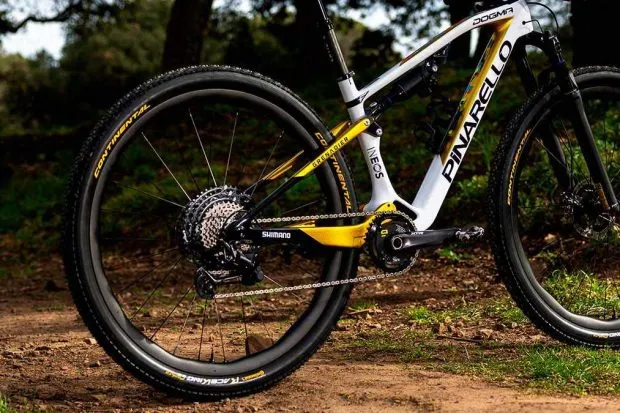
Take Pinarello’s new Dogma XC, which utilises the compliance and ability to fine-tune the carbon layup in the flex-stay suspension system. Here, Pinarello says it has used the flex built into the seatstays as part of the linkage – reducing weight and increasing rigidity.
Like it or loathe it, headset cable routing is here to stay
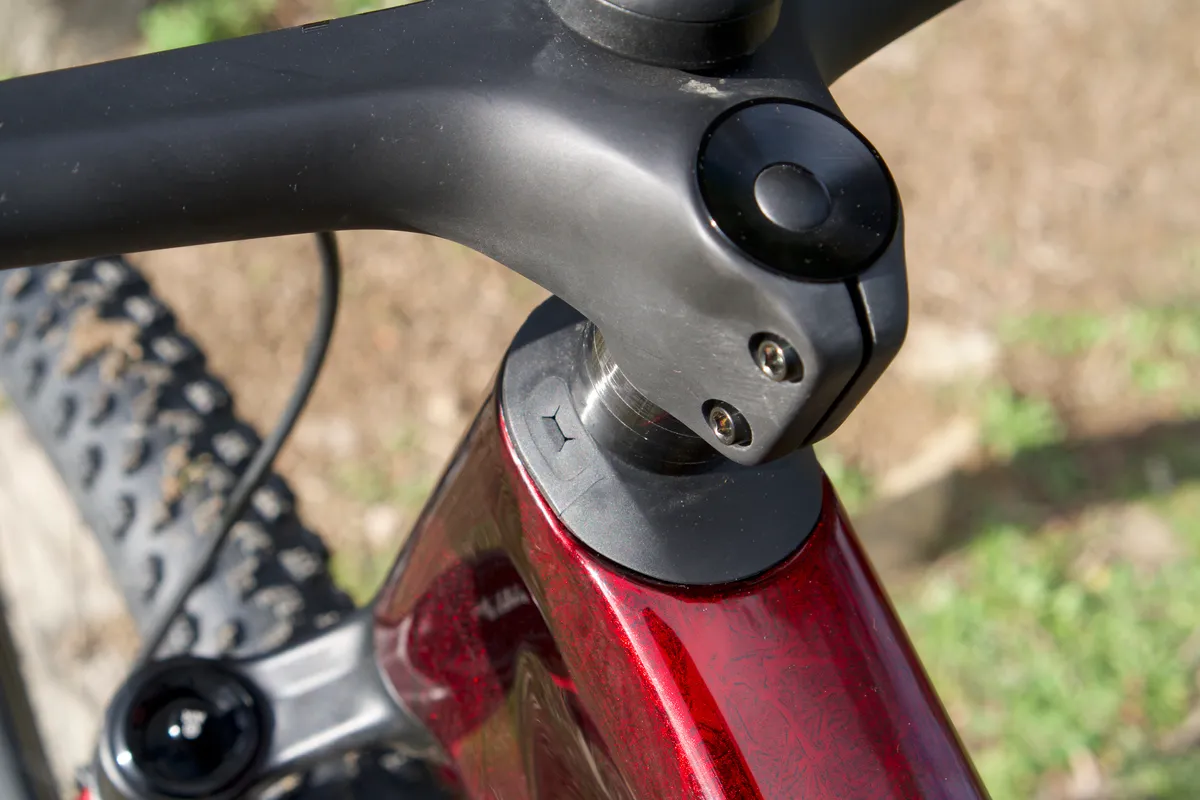
As is the case with most bikes, internal cable routing is commonplace on cross-country bikes.
While internal cable routing isn’t universally loved, with many mechanics cursing whenever they need to change a cable, in recent years a new trend has emerged in the form of headset cable routing, as seen on the Epic World Cup.
This routes the cables into the frame through the headset, leading to a cleaner cockpit and less cable exposed at the front of the bike. It makes it, in theory, harder for cables to be pulled from levers in the event of a fall. There’s potentially a small aerodynamic gain, too.
It poses a new maintenance headache, though, with cables needing to be disconnected when replacing a headset bearing. That might be okay for World Cup racers with personal mechanics at their disposal – but not so much for the rest of us.
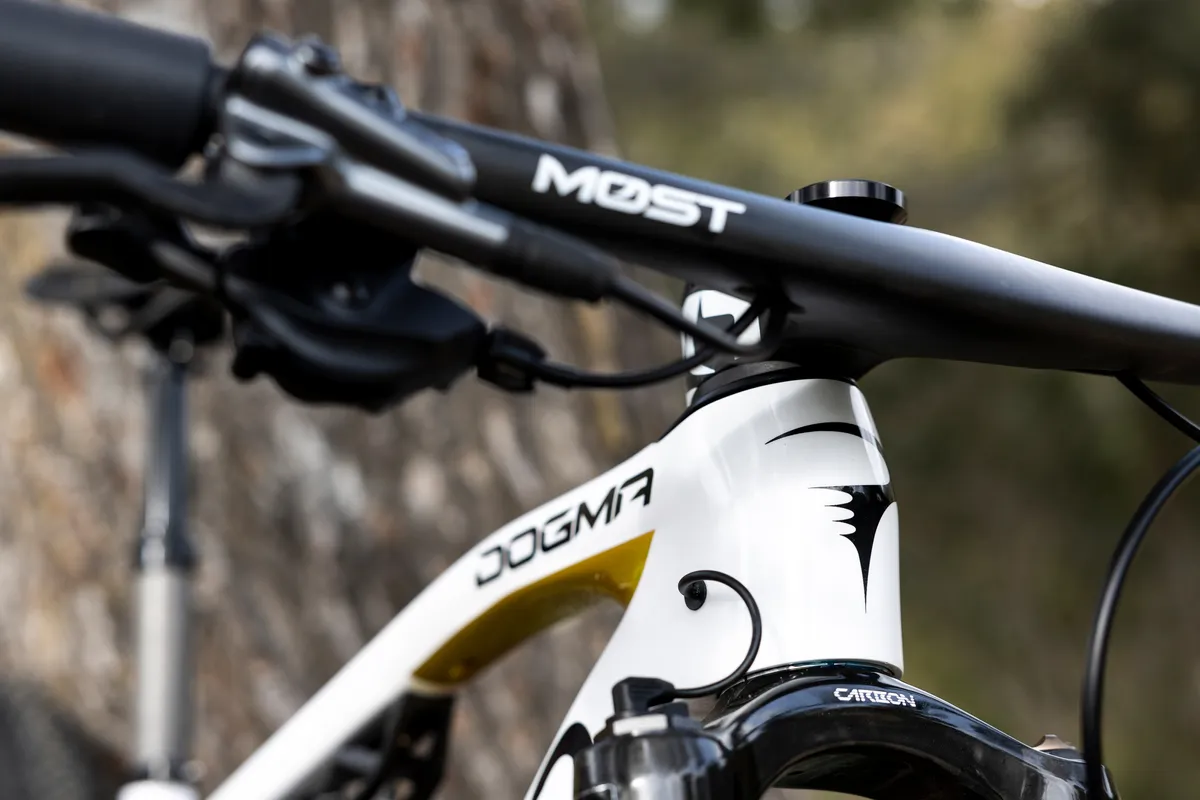
While we’re talking cockpits, we’re also seeing an increasing number of new XC bikes with integrated handlebar and stems, such as the MOST bar on the new Pinarello.
Chunky tyre clearance
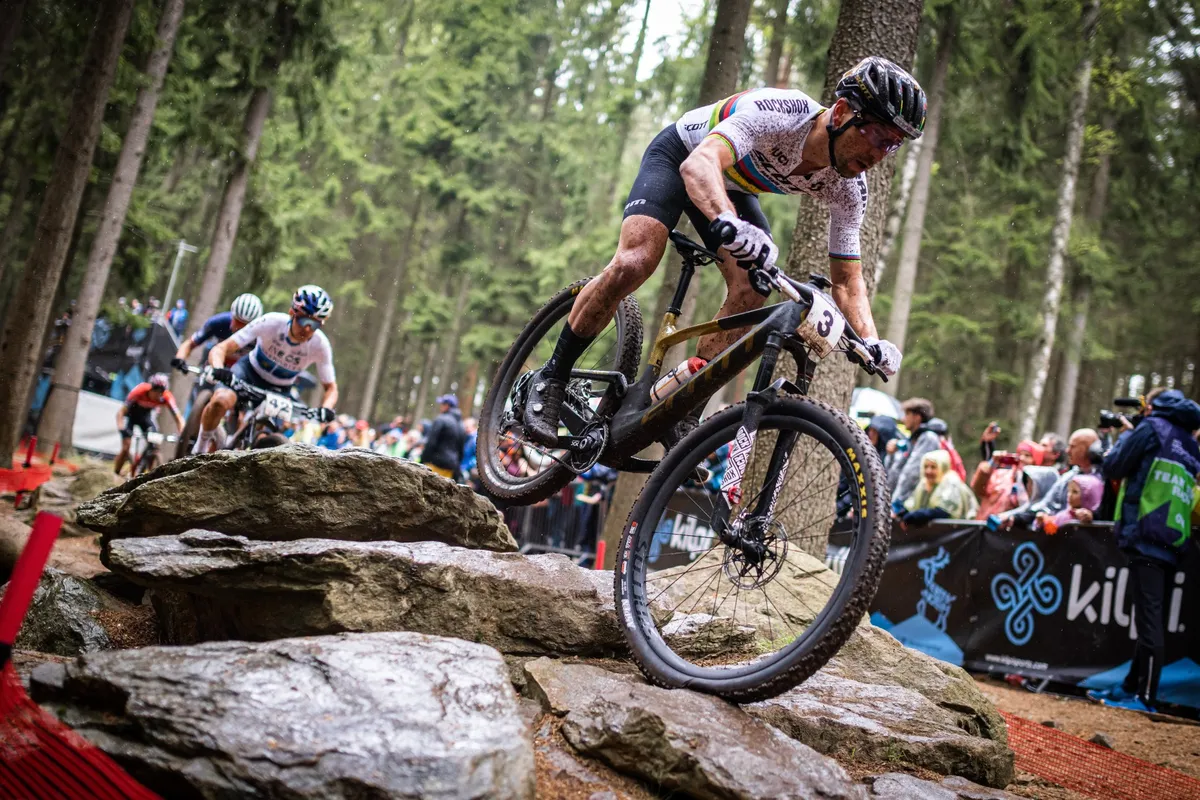
Cross-country bikes have traditionally used skinnier tyres, the theory being that the smaller contact patch and lower weight made for faster lap times.
While this may hold true for certain courses, the technical tracks found on the XC World Cup circuit have seen many riders opt for wider tyres, which, in turn, has led frame designers to increase tyre clearance on their frames.
Wider tyres enable riders to run lower tyre pressures, increasing grip and reducing the chance of pinch punctures. There’s also a greater understanding of the fact that a wider tyre may not always roll slower.
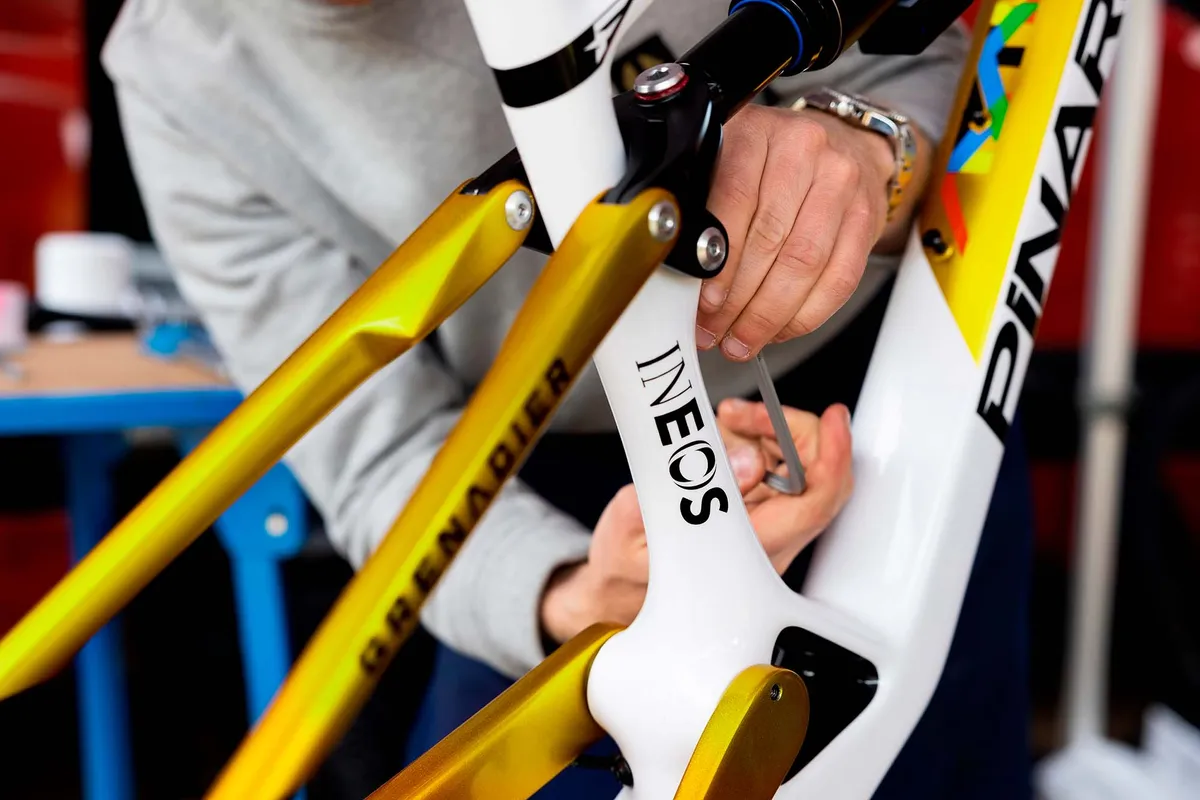
Pinarello’s new Dogma XC features a split rear triangle, removing the bridges connecting the sides. This allows clearance for a 2.35in tyre, although Tom Pidcock opted for 2.2in Continental Race King Pro Ltd tyres.
However, men’s world champion Nino Schurter maximised the 2.4in tyre clearance on his Scott Spark, once again indicating how the lines are becoming increasingly blurred between XC bikes and their long-travel siblings.
